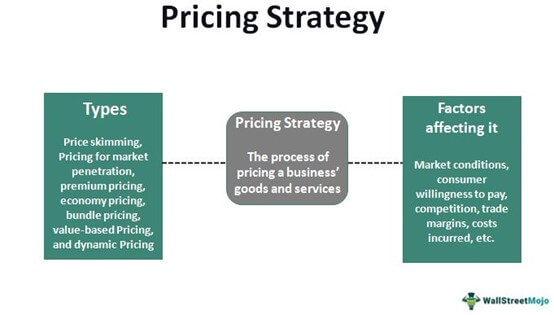
Pricing strategy is one of the most important aspects of a business’s marketing mix. It can have a significant impact on sales, profits, and market share. A well-defined pricing strategy can help a business to achieve its goals, such as increasing market share, generating profits, or building brand awareness.
There are many different pricing strategies that a business can use. The most appropriate strategy will depend on a number of factors, including the type of product or service being offered, the target market, the competitive landscape, and the business’s goals.
Some common pricing strategies include:
- Penetration pricing: This strategy involves setting a low price in order to attract new customers and quickly gain market share. This strategy can be effective for new products or services, or for businesses that are trying to enter a new market.
- Skimming pricing: This strategy involves setting a high price for a new product or service. This strategy can be used to recover the costs of research and development, or to generate profits quickly.
- Value-based pricing: This strategy involves setting a price that is based on the value that the product or service provides to the customer. This strategy can be effective for products or services that are unique or that offer a significant advantage over the competition.
- Psychological pricing: This strategy involves using numbers that are perceived as being attractive to customers. For example, a price of $9.99 may be perceived as being lower than $10.00, even though the difference is only one cent.
When setting prices, it is important to consider the following factors:
- The cost of production: The cost of production is the minimum price that a business must charge in order to make a profit.
- The target market: The target market is the group of customers that the business is trying to reach. The price of a product or service should be set based on what the target market is willing to pay.
- The competitive landscape: The competitive landscape is the set of businesses that offer similar products or services. The price of a product or service should be set in a way that is competitive with the competition.
- The business’s goals: The business’s goals should be considered when setting prices. For example, a business that is trying to increase market share may be willing to sell its products or services at a lower price than a business that is trying to generate profits.
Pricing is a complex and important decision. By carefully considering all of the factors involved, businesses can set prices that will help them to achieve their goals.
In addition to the above, here are some other tips for setting effective pricing strategies:
- Be flexible. Don’t be afraid to adjust prices based on changes in the market or your target market.
- Be transparent. Communicate your pricing strategy to customers so that they understand why you are charging the price you are.
- Be consistent. Once you set a price, stick to it. Don’t start offering discounts or promotions unless you have a good reason.
By following these tips, you can set effective pricing strategies that will help you to achieve your business goals.

